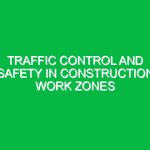Introduction
Construction sites are bustling places where workers are often exposed to various hazards. To ensure the safety and well-being of everyone on site, it’s crucial to have effective first aid and medical facilities in place. Construction site first aid refers to the immediate assistance provided to an injured or ill person until professional medical help arrives. Medical facilities encompass all the resources and services available on-site or nearby to address health emergencies. Understanding the significance of these services is essential in the Health, Safety, and Environment (HSE) domain.
In this article, we will explore the hazards associated with construction sites, outline safety precautions, and discuss the regulations and standards that govern first aid and medical facilities. Whether you are a site manager, worker, or just interested in construction safety, this guide will provide valuable insights into keeping everyone safe on a construction site.
Hazards
Construction sites are fraught with potential dangers that can lead to accidents and injuries. Here are some of the most common hazards and risks associated with construction sites:
1. Falls
Falls are one of the leading causes of injuries in construction. Workers may fall from scaffolding, ladders, or roofs. For instance, if a worker is not wearing a safety harness while working at heights, a slip can lead to serious injuries or even fatalities.
2. Machinery and Equipment Accidents
Heavy machinery such as cranes, bulldozers, and forklifts can pose significant risks. If operators are not trained properly or if safety protocols are ignored, accidents can happen. For example, a construction worker could get caught in moving parts of equipment if proper safeguards are not in place.
3. Electrical Hazards
Electrical shocks and electrocutions can occur when workers come into contact with live wires or faulty equipment. For example, a worker using a power tool that has frayed wires is at risk of electric shock, which can lead to severe injuries or death.
4. Hazardous Materials
Construction sites often involve the use of hazardous materials, such as asbestos, lead, or chemicals. Exposure to these substances can cause long-term health issues. For instance, inhaling asbestos fibers can lead to serious respiratory problems.
5. Noise Exposure
Construction work often involves loud machinery and equipment, which can lead to hearing loss over time. Workers who are regularly exposed to high noise levels without proper hearing protection are at risk of developing permanent hearing damage.
6. Manual Handling Injuries
Lifting heavy objects incorrectly can cause sprains, strains, and other musculoskeletal injuries. For instance, if a worker attempts to lift a heavy beam without using proper techniques, they risk injuring their back.
7. Weather-Related Hazards
Construction workers are often exposed to the elements, including extreme heat, cold, or rain. Heat exhaustion and hypothermia are real dangers that can affect workers’ health if they are not adequately protected.
Safety Precautions
To mitigate the risks associated with construction site hazards, it’s essential to follow specific safety precautions. Here are some best practices to ensure a safer working environment:
1. Fall Protection Systems
Installing guardrails, safety nets, and personal fall arrest systems can significantly reduce the risk of fall-related injuries. Workers should always wear safety harnesses when working at heights.
2. Proper Training and Certification
Ensure that all workers are adequately trained to operate machinery and understand safety protocols. Certification programs can help workers recognize hazards and respond appropriately.
3. Regular Equipment Inspections
Conduct routine inspections of all machinery and equipment to ensure they are in good working condition. Any faulty equipment should be repaired or replaced immediately to prevent accidents.
4. Safe Electrical Practices
Implement lockout/tagout procedures when working on electrical systems to prevent accidental energization. Workers should also wear insulated gloves and use tools with insulated handles.
5. Use of Personal Protective Equipment (PPE)
Workers should always wear appropriate PPE, including helmets, gloves, goggles, and hearing protection. This gear can help protect against injuries from various hazards on the site.
6. Proper Material Handling Techniques
Provide training on safe lifting techniques to prevent manual handling injuries. Encourage workers to use dollies, forklifts, or hoists whenever possible to move heavy materials.
7. Weather Preparation
Monitor weather conditions and provide appropriate training for workers on how to recognize and respond to heat-related illnesses or cold exposure. Ensure that workers have access to water and shelter as needed.
Regulations and Standards
Several regulations and standards govern the implementation of first aid and medical facilities on construction sites. Understanding these rules is crucial for maintaining compliance and ensuring worker safety.
1. Occupational Safety and Health Administration (OSHA)
In the United States, OSHA sets and enforces standards to ensure safe and healthy working conditions. OSHA requires that construction sites have first aid kits readily available and that trained personnel are present to administer first aid when necessary.
2. First Aid Regulations
Regulations often dictate the number of first aid kits required based on the number of workers on site. Additionally, these regulations may specify the contents of first aid kits to ensure they are equipped to handle common injuries.
3. Health and Safety at Work Act (UK)
In the United Kingdom, the Health and Safety at Work Act mandates that employers provide adequate first aid facilities and trained first aid personnel. This law emphasizes the importance of having a first aid plan in place to address emergencies effectively.
4. Construction (Design and Management) Regulations
These regulations require that health and safety considerations be integrated into the planning and management of construction projects. This includes having a competent person responsible for first aid arrangements on site.
5. International Standards
Many countries adhere to international standards, such as ISO 45001, which focuses on occupational health and safety management systems. These standards provide guidelines for organizations to improve worker safety and health continually.
Additional Guidelines
1. Emergency Response Plans
Every construction site should have a clear emergency response plan that outlines procedures for dealing with various types of emergencies. This plan should be communicated to all workers and include details on how to contact emergency services.
2. Regular First Aid Training
Conduct regular first aid training sessions for all workers, not just designated first aiders. This training can empower more individuals to respond effectively in emergencies, potentially saving lives.
3. Documentation and Reporting
Maintain accurate records of all injuries and incidents on site. This documentation can help identify patterns and areas for improvement in safety practices.
4. Collaboration with Local Medical Facilities
Establish a relationship with nearby medical facilities. Knowing where to send injured workers and how to get them there quickly can be critical in emergencies.
5. Continuous Improvement
Regularly review and update first aid and safety procedures based on new regulations, lessons learned from incidents, and feedback from workers. Continuous improvement is key to maintaining a safe work environment.
Conclusion
Ensuring proper first aid and medical facilities on construction sites is not just a legal obligation but a moral imperative. By identifying hazards, implementing safety precautions, adhering to regulations, and fostering a culture of safety, we can protect workers from harm and create a safer work environment. Remember, the goal is not only to comply with regulations but to genuinely care for the health and safety of every individual on the construction site. By doing so, we contribute to a safer and more productive construction industry for everyone involved.


